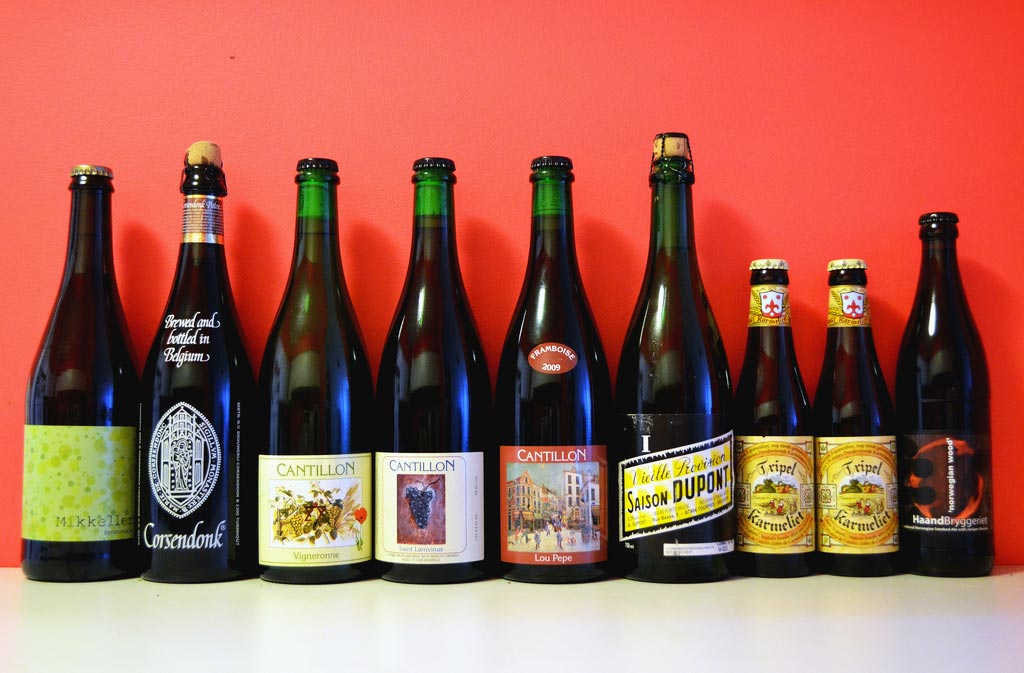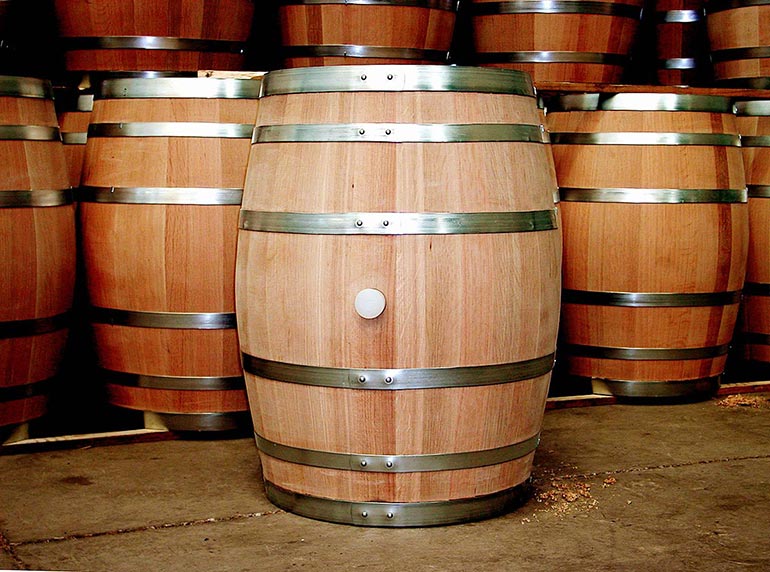Start 14-Day Trial Subscription
*No credit card required

The Most Popular Beer Sizes in Cans, Glasses, Kegs and More
Discover the world of beer serving sizes and vessels! From pint glasses to cans, bottles to kegs, unravel the confusion with our guide to the most popular beer sizes. Learn about the various glass shapes and sizes that enhance your beer-drinking experience.
From one bar to the next, there’s little consistency in what a serving of beer might look like. Serving sizes and the vessels they come in can be confusing even for a seasoned beer drinker, so how a beer shows up in front of a customer can be intimidating and puzzling. Beer lovers argue over whether a shaker pint is acceptable for a beer, or they may insist on nonic pints, snifters or tulips. Cans and bottles offer a variety of different serving sizes for consumption at home, and breweries produce barrels of beer – though that is a different measurement than the wooden whiskey barrels and kegs that often make their home within breweries and restaurants alike. To help clear up any confusion, here's a closer look at the most popular beer sizes you'll find among cans, bottles, kegs and more.
Glass Sizes
Breweries will more often than not pour their beers out of serving tanks and kegs through a draft system into glasses. These different types of beer glasses will vary in size and are often somewhat based on a beer’s alcohol content. Here's a nice review of the best beer mugs from Kitchenistic if you are looking for one.
As breweries and consumers become more sophisticated in their beer knowledge, the glass variations are expanding to fit certain types of beers and accentuate their aromas and flavors, but these three sizes are most likely to be found at your neighborhood brewpub.
4 oz.
If a brewery is offering flights of beers, it’s a good bet the flight will come in 4-ounce servings. The size is convenient as four samples equals one pint, the most common offering for a bar’s beer menu.
8 oz.
For higher-ABV beers, 8 ounces is a logical serving size for bars. Those smaller glasses for higher alcohol brews almost always come in the form of a tulip glass or snifter, and the exact sizes can vary a little bit.
16 oz.
A pint is the standard measurement for beer. A lot of bars will serve virtually all beers in a pint glass, but as the average beer consumer learns more about glassware, so too do restaurants. Still, “I’ll have a pint,” will remain a universal request for a beer. An imperial pint in Europe and Canada is 20 ounces, 4 more than American pints, which just adds to the confusion. Pint glasses are also available in flat-sided "standard" glasses or "nonic" glasses, which have a small ridge halfway up the glass for aroma.
Shapes of Beer Glasses
There is a smorgasbord of beer glasses available to connoisseurs. While everyone might have a favorite beer glass, a few of the many options include:
American Pint Glass
A standard pint glass that can serve anything from cocktails to beers to sodas to waters. Found in pretty much every restaurant in America, one way or another.
Stange Glasses
Created in Germany for the refreshing and delectable German kölsch style, this straight-walled glass looks terrific and works well for lighter lagers as well as for housing its namesake kölsch.
Thistle Glass
A modified tulip glass, this striking glass is best employed when sipping Scottish ales. The pronounced bulb shape atop the stem and the light flare atop the glass will help the peaty, rich aromas and flavors pour forth.
Goblet and Chalice
Similar in size, shape and design, these two glasses are like wine glasses except with a wider base and a thicker stem.
Pilsner Glass
Tall, slender and slightly curvy, these glasses work perfectly for low-ABV summer sippers.
Beer Stein
The classic delivery system for large portions of German brews at Oktoberfest, this beer holder can be made from a variety of materials, including porcelain, pewter, stoneware and, of course, glass.
Snifter Glasses
Typically reserved for whiskey, the snifter glass is also perfect for myriad beer styles, including Belgian ales, stouts and even IPAs!
Weizen Glass
Similar in shape to pilsner glasses, weizen glasses have more curvature to them, especially at the top. Use this glass to enjoy delectable wheat beers and saisons.

Can Sizes
Cans once had a bad rap among craft beer consumers who were still in rebellion of anything associated with macro lagers. Cans have experienced a massive renaissance over the past decade with more brewers shifting to the aluminum container. There’s a general consensus that cans provide more protection against light and oxidation than their glass counterparts, allowing beer to age more gracefully.
8.4 oz.
This "nip can" is a more compact version of the typical 12-oz. can. Though rare, you'll see 21st Amendment's Lower De Boom Barleywine and the Rodenbach Fruitage sour ale in this tiny container. Compact and easily transportable, this container is perfect for small snifters on the beach or for a little tipple during a camping trip.
12 oz.
A can of beer, for much of mainstream can history, is 12 ounces. Short and compact, a 12-ounce can matches the recommended serving size of beer. Cans of this size come in a range of packs, including 6-, 12-, 15-, 18-, 24- and 30-packs.
16 oz.
Pint cans have surged with the rise of craft beer. More common now than ever before, they offer a full pour of a pint glass. Most often found in 4-packs, pint cans have seen their popularity grow as a way for brewers to showcase their beers in attractive new formats.
19.2 oz.
A relatively new entry to the can world, the 19.2-ounce “stovepipe” can offers craft brewers an "in" at convenience stores and gas stations. Not quite a tall boy in the classical macro sense, the 19.2-ounce can experienced the largest growth of packaged sales from 2015-2017 according to IRI data, with Oskar Blues Brewery and Terrapin Beer Co. leading the way in usage of this container.
Bottle Sizes
Bottles are still the dominant form of beer containers sold in retail outlets, occupying the top two slots of IRI Worldwide beer sales data. There are all sorts of thoughts about green, clear and brown bottles, with brown being the winner in most hearts and minds. Like cans, they come in a huge array of beer bottle sizes, but these are the most common.
Tips: A bottle opener is a common tool used for bottling beer. If you are a brewer or retailer, you can customize challenge coins with a bottle opener function to give to your customers. You can choose from a variety of different designs, such as adding your brand logo or a favorite saying, which is not only a practical and fun gift but can also serve as a branding tool.
12 oz.
Like the 12-ounce can, 12-ounce bottles are the standard container for macro beers, mostly in 6-, 12- and 24-packs. The bottles also vary a bit on design, ranging from 11.2 ounces to 13 ounces, from stubby to short to long-necked.
22 oz.
Long staples of the craft beer community, “bombers” are beginning to see a drop in popularity in favor of 4-packs of 16-oz cans for limited-release beers. Offered singularly, a 22-ounce bottle offers consumers the ability to try to more beer and share with friends as they embrace the experiential qualities of beer culture. Bombers were the standard-bearers for limited-release offerings from the finest breweries for a long time; however, pint cans have quickly overtaken them due to the rise of New England IPAs, which are almost always found in pint cans, as well as the fact that cans are much more transportable. Bomber tops can also be dipped in wax to add to the exclusivity.
750 mL
Another large-format bottle, this one is most commonly found as a "standard" wine bottle size. Brewers often turn to this size (and similar mL sizes) to showcase specialty beers, especially wild and sour beer categories. A 750-mL bottle contains a little more than a pint and a half of liquid, or 25.28 ounces, while a similar-sized 765 mL bottle contains almost 25.87 ounces. Refined beers found in this container are often caged and corked, adding to the overall elegance of the graceful shape of this bottle.
64 oz.
A "growler" is a great way for a drinker to experience beer from breweries − and other venues − with beers only available on draft. Most often a familiar glass jug with a small finger handle by the mouth of the container, growlers can also be stainless steel or ceramic. The containers can also be a variety of sizes, including 32 ounces.
Crowlers
A canned growler, the crowler is a rather new addition to the craft beer container world, and it has skyrocketed in popularity as it its single usage keeps beer fresher than resealable glass growlers. Crowlers are sealed in-house, often behind the bar at the taproom, and come in 32-ounce variants (though smaller versions are apparently being worked on). As has been stated, cans have risen in popularity due to their apparent ability to keep beers fresher for longer.

Photo Courtesy Flickr/Richard Gould
Keg Sizes
Unless a brewery is serving straight out of serving tanks, beer from a tap handle is coming from kegs at the brewpub or bar. Kegs are most commonly silver metal, but also come in plastic and are usually reusable. Disposable kegs are increasingly offering small breweries opportunities for distribution.
Half Barrel
This is the most common size of keg and likely a familiar look for any person who’s been to a college kegger. A standard barrel (which is how brewers measure their production) is 31 gallons, meaning this is 15.5 gallons. That equates to approximately 124 pints of beer, or 165 12-ounce pours.
Quarter Barrel
Keg sizes are fairly self-explanatory; this is 7.75 gallons, or a quarter of a barrel. These come in two heights and girths, but regardless carry about 62 pints or 82 12-ounce beers.
Sixth Barrel
More common now as beer bars increase their tap counts and the idea of rotating beers, sixth barrels hold 5.16 gallons of beer, or a sixth of a barrel. Often called a "sixtel" in breweries, these pour 42 pints or 56 12-ounce servings.

Wood Barrels
53 gallon
When a brewer says he brews 1,000 barrels, he does not mean he made 1,000 of these wood barrels worth of beer -- the brewer is referring to the standard brewing barrel size of 31 gallons. Still, these wooden, 53-gallon barrels find themselves as centerpieces of brewery tours, mostly due to their purpose for aging beer. In fact, some breweries have warehouses full of thousands of barrels aging beer at any given time. Polish these off in one sitting, though, and it's time to think about a treatment program. The standard and most commonly used barrel is the 53-gallon variety used by bourbon makers, but they come in a wide range of sizes, just like kegs.





Comments